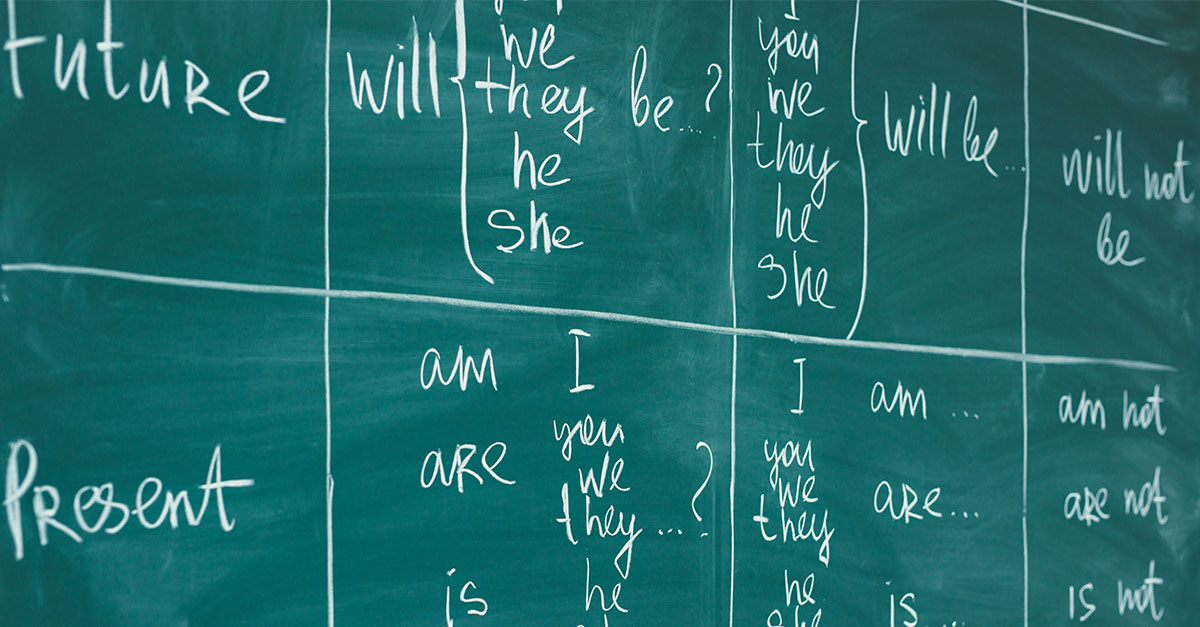
Every story takes place in time and thus has three parts: a beginning, a middle, and an ending. Imagine trying to tell a friend about a family adventure if you couldn’t reference time at all in your storytelling process. You would probably find it impossible to fully relate the events in your adventure. Timelines are an important form of structure that allows us to make sense of our lives.
In the English language, verb tenses are the grammatical tool we use to situate our sentences in time. These tenses help us to establish a timeline for each individual sentence, helping the reader to know when an event occurred, is occurring, or will occur.
Now, it might seem to us like there are only three possible verb tenses: past, present, and future. I jumped, I jump, I will jump. But consider the grammatical structure of the following sentence: The submarine will have reached uncharted depths a month from now. While this sentence is indeed set in the future tense, it is much more complex than the sentence “I will jump.” And this is because these two sentences have different grammatical aspects.
For each main tense (past, present, and future), there are four potential grammatical aspects that can affect how we understand the sentence: the progressive, perfect, perfect progressive, and simple. The progressive aspect designates actions that are ongoing, “I am jumping,” while the perfect designates completed actions, “I jumped.” The perfect progressive describes the completed part of a continuous action: “I had been jumping.” And finally, the simple aspect describes an action that is not characterized as either continuous or completed, as in the sentence “I jump.”
In the sentence, “I will jump,” the tense is future and the aspect is simple. But the sentence “The submarine will have reached uncharted depths a month from now” designates a future event that will be completed, and is thus written in the future perfect. And if we really want to have some fun, we could even add a second verb to the sentence: “After voyaging for four weeks, the submarine will have reached uncharted depths a month from now” making this sentence the future perfect progressive tense.
If all this seems confusing, watch this helpful animated video below that uses the story of an adventuring submarine to walk us through these various tenses.




I loved it. Thank you
Though not bad or particularly erroneous, the TED cartoon does make the discussion of tense and its forms more confusing than necessary, as well as being incomplete. I found the inclusion of verb forms in other languages interesting in several ways, particularly in its hinting at the various linguistic and cultural approaches to time. I guess, given the context, that a breadth of comparison was more appealing than any depth might have been.
For a much more thorough, consistent, and clear presentation of verb forms, I would refer you to the book, Outline of English Grammar, chapter IV.
Visual and verbal learners may find it easier to read the material than to watch the video: https://bluesyemre.com/2020/02/18/12-major-english-tenses-with-examples-schemes-building-formulas-infographic-created-by-ivypanda/
It’s important to find the right format to convey the information. Otherwise, it can be confusing for the children.
But anyway, I liked the video a lot. I’ve added it to my playlist and I’m sure I’ll use it many times.
I was jumping, I am jumping, I will be jumping
I had been jumping, I have been jumping, I will have been jumping
I jumped, I jump, I will jump
I had jumped, I have jumped, I will have jumped